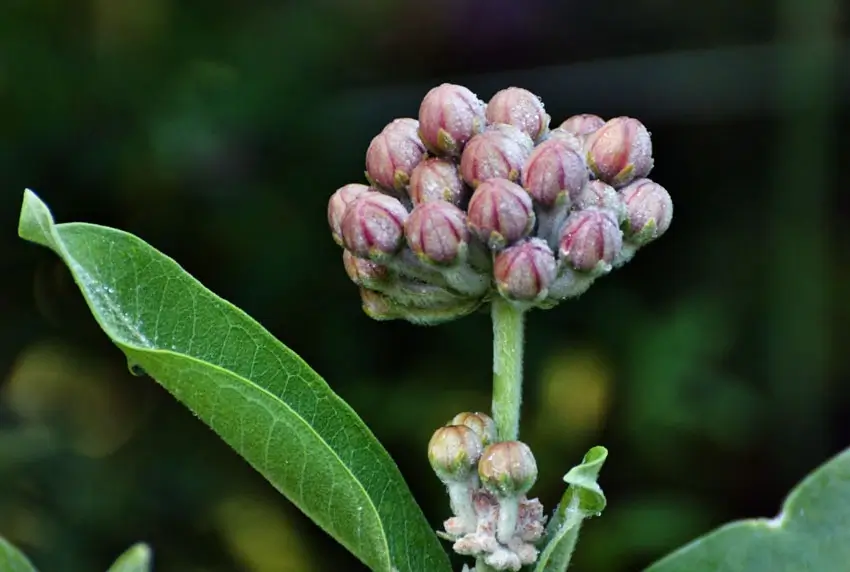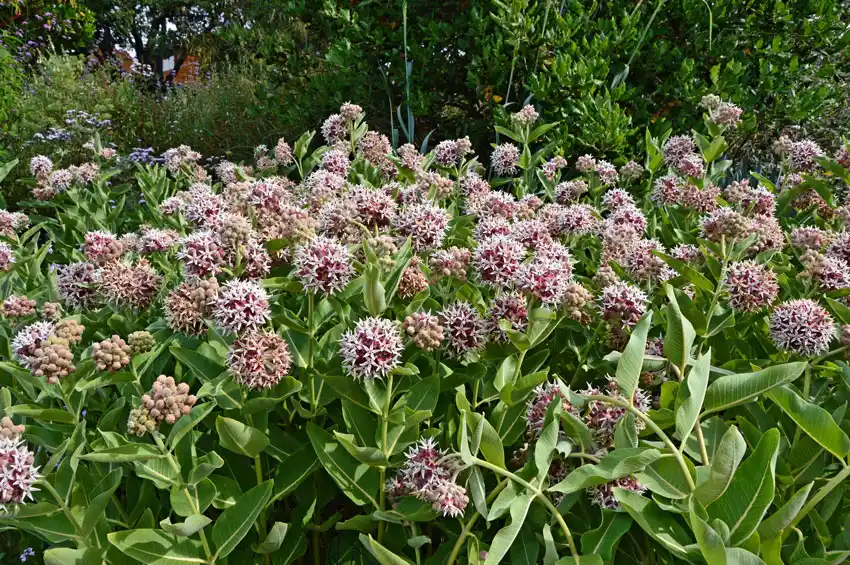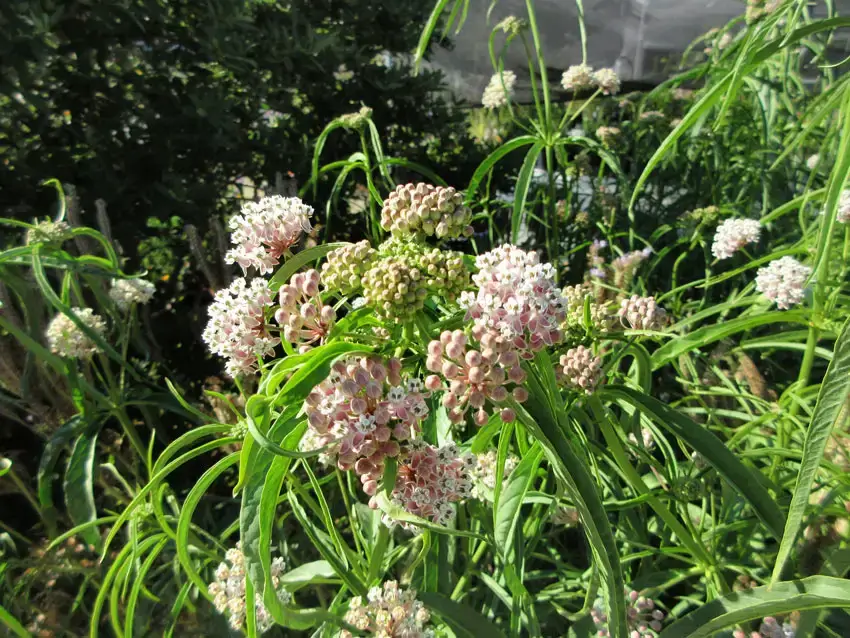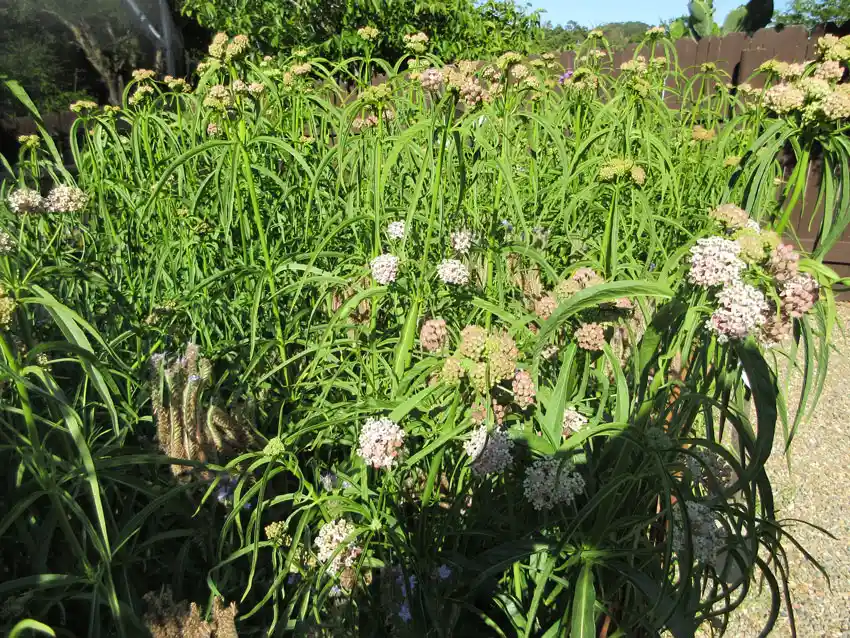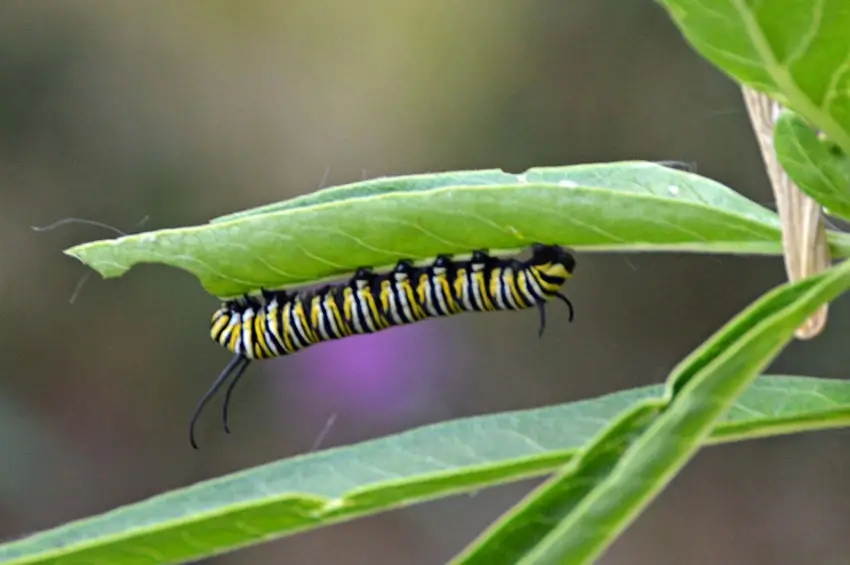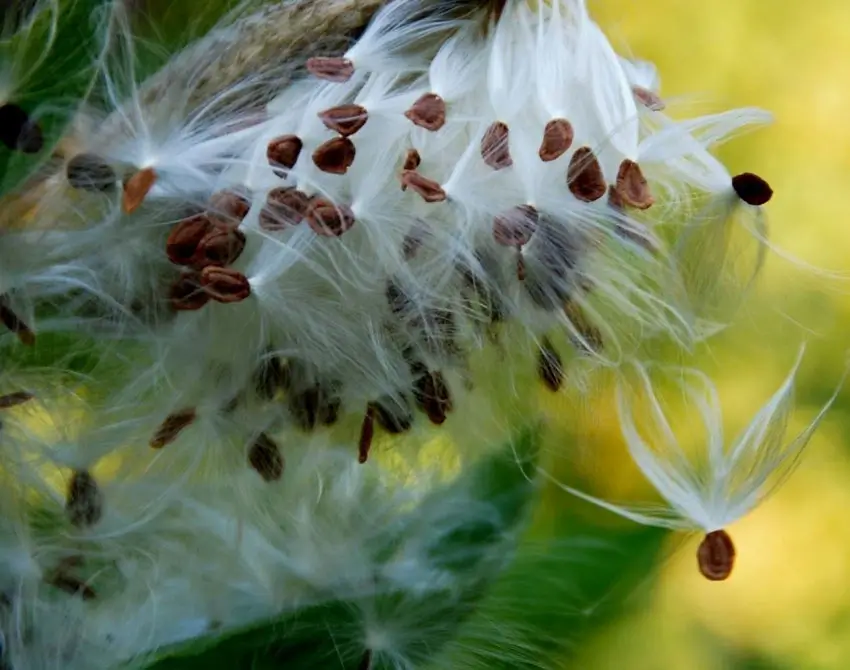Just about everyone loves the Monarch Butterfly – and by association with this iconic insect, knows about Milkweeds (Asclepias species). Milkweeds are the only host plant for the larvae (caterpillars) of the Monarch Butterfly, and therefore essential to the species, which has recently been listed as potentially endangered. Concerned nature lovers want to provide for this beautiful butterfly, and the essential milkweeds are easy plants in garden culture! Two native milkweeds – Showy (Asclepias speciosa) and Narrow-leaf (Asclepias fascicularis) are both adaptable to various soils and a range of conditions. Both species are best in full sun, are drought tolerant, and are deer-proof!
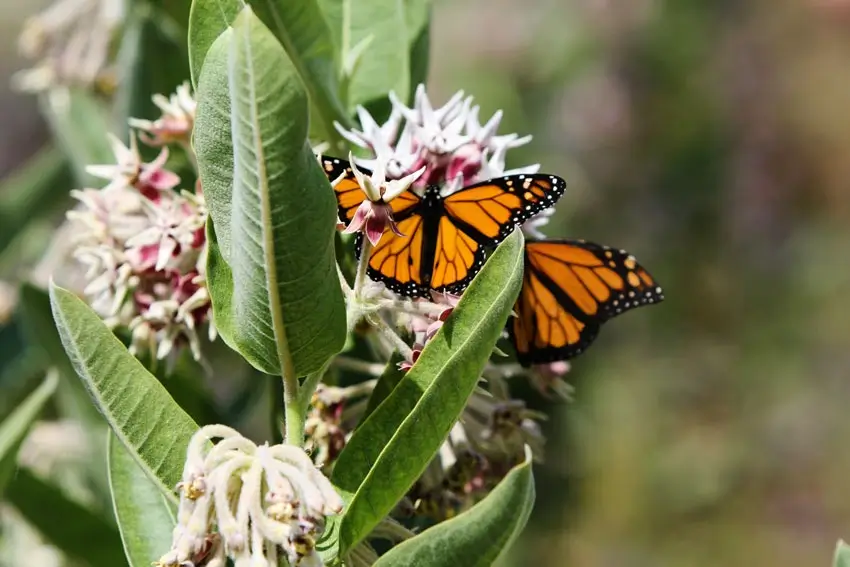
Photo Credit: Harmina Mansur
The milkweeds are herbaceous perennials with a fairly long dormant season. They are not ‘tidy’ plants, but essential plants in any habitat garden. Showy Milkweed goes dormant in early fall (about October) and breaks dormancy in early spring (about March). Narrow-leaf Milkweed continues in leafy form until late fall but doesn’t leaf out again until about April. Both species will move around a garden – the Showy with widely-wandering roots – and the Narrow-leaf which spreads both by roots and by re-seeding.
This is fine, or at least OK, with habitat gardeners who have come to realize that once you invite nature into your garden sanctuary you become more of an editor, rather than being a gardener in complete control of their garden! Once habitat gardens truly become sanctuaries, then nature itself creates conditions conducive to still more life. Plants wander and find their own best conditions – and birds, insects, and small animals move seeds around and help them settle into the soil.
Showy Milkweeds are indeed very beautiful in full bloom; the flowers are large and wonderfully fragrant, and the large seed pods are also showy! Narrow-leaf Milkweed has smaller flowers with only a hint of fragrance, and narrow seed pods. I consider this species a better host plant and find the most larvae feeding on it in my own Novato garden. Monarch larvae can consume all parts of the plant – and all parts will regrow if it’s not too late in the season – new leaves, flowers, and seed pods after supporting the larvae.
By the time the milkweeds enter into dormancy, the Monarchs are congregating at several over-wintering sites along the California coast. When the milkweeds in your garden are dormant cut the old stems to the ground, and add a top-dressing of compost. If the orange Oleander aphids are a problem on the milkweeds use Neem-seed meal sprinkled around the base of the stems in an effort to reduce the populations of this introduced pest, which over-winter as ‘stem mothers’ at the very base of the plant.
In spring, as milkweeds start to put on new growth, the Monarchs also come alive, break their reproductive diapause, seek mating opportunities, and start to disperse from their over-wintering sites to seek out the milkweeds on which to lay their eggs and a whole new generation!

